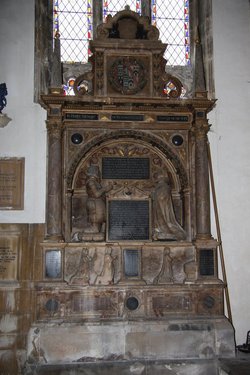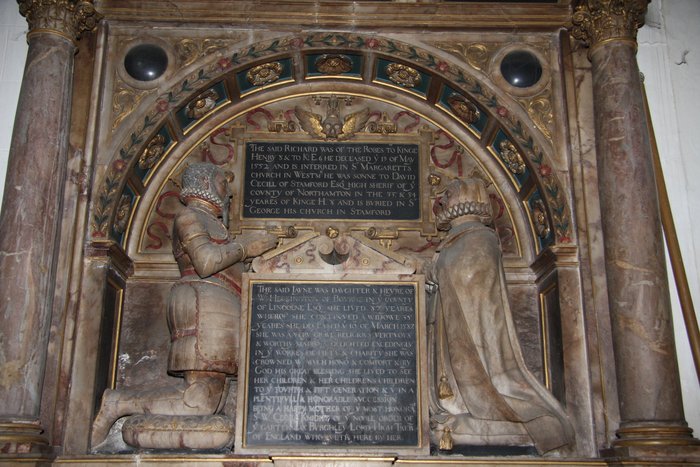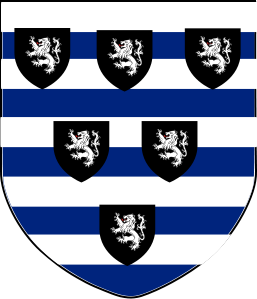∼Like his father Sir David Cecil, Richard was a courtier who rose in rank and influence in Tudor England.
In about 1519 he married Jane, the daughter of Sir William Heckington of Bourne in Lincolnshire. They were the parents of three daughters, Anne (also called Agnes), Elizabeth, and Margaret; and a son, William, who became one of the most politically powerful men in England.
Sir Richard died at Westminster in his house in Canons Row, and was buried at this church on 22 Mar 1553**.
An elaborate monument to him and his wife was later erected at St. Martin's Stamford in Lincolnshire, where she was laid to rest.
(**During his day the Julian calendar was in use, in which the new year began in late March rather than January as it now does. In order that the year of his death and burial correspond to our modern calendar, historians correct the year or, alternatively, express it as 1552/53.)
∼Son of David Cecil and lst wife Alice Dickens/Dycons. Brother of Joan Browne and David Cecil, the 2nd. Sheriff of Northamptonshire in 1542-43. Custodian of Windsor Castle. Supporter of King Henry VIII in his breach with the Catholic Church. His marriage to Jane Heckington brought the Lordship of BURGHLEY as heir of her father Wm Heckington including the mansion of his lordship's barony and other lands. Father of Lord Wm. BURGHLEY, Lord Treasurer of England, Anne Cecil (John White,Esq.), Elizabeth Cecil (John Wingfield, Esq.) and Margaret Cecil (Roger Cave,Esq.)
∼Like his father Sir David Cecil, Richard was a courtier who rose in rank and influence in Tudor England.
In about 1519 he married Jane, the daughter of Sir William Heckington of Bourne in Lincolnshire. They were the parents of three daughters, Anne (also called Agnes), Elizabeth, and Margaret; and a son, William, who became one of the most politically powerful men in England.
Sir Richard died at Westminster in his house in Canons Row, and was buried at this church on 22 Mar 1553**.
An elaborate monument to him and his wife was later erected at St. Martin's Stamford in Lincolnshire, where she was laid to rest.
(**During his day the Julian calendar was in use, in which the new year began in late March rather than January as it now does. In order that the year of his death and burial correspond to our modern calendar, historians correct the year or, alternatively, express it as 1552/53.)
∼Son of David Cecil and lst wife Alice Dickens/Dycons. Brother of Joan Browne and David Cecil, the 2nd. Sheriff of Northamptonshire in 1542-43. Custodian of Windsor Castle. Supporter of King Henry VIII in his breach with the Catholic Church. His marriage to Jane Heckington brought the Lordship of BURGHLEY as heir of her father Wm Heckington including the mansion of his lordship's barony and other lands. Father of Lord Wm. BURGHLEY, Lord Treasurer of England, Anne Cecil (John White,Esq.), Elizabeth Cecil (John Wingfield, Esq.) and Margaret Cecil (Roger Cave,Esq.)








